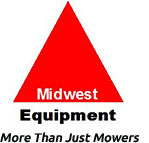Interview with Midwest Equipment on How to Succeed at Multi-Location Management
 If growth is the priority for your dealership, then opening another location should seem like a no-brainer. However, a second location can easily destabilize your entire business, if not handled properly.
If growth is the priority for your dealership, then opening another location should seem like a no-brainer. However, a second location can easily destabilize your entire business, if not handled properly.
That’s why Midwest Equipment – an outdoor power equipment dealership chain with three stores across Illinois – recommends taking it slow and growing “naturally” over time, to avoid wasting thousands of dollars on unsuccessful locations.
Recently, we were able to sit down with Steve Meyer, the business manager and co-owner of Midwest Equipment, to discuss what tools and strategies his dealership used to expand across three locations. Find out what he had to say in our interview with him below!
Can you tell us a little bit about Midwest Equipment and how you got involved?
Steve: “I am a mechanic by trade. I started out by taking apart my dad’s IH MH corn picker that he had for parts. Then cars came into the picture – high school shop classes were an easy way to get the required credits for me. After that, I went on to attend a one-year technology school. Eventually, I ended up overseas for eight years, working as a mechanic in a remote jungle in the South Pacific.
When I got back home, my brother-in-law, who was an entrepreneur, met me at the airport and said, ‘Now that you’re home, what are you going to do?’
‘I don’t know,’ I said.
‘Then I’ve got a deal for you.’
A couple of years prior to this conversation, my father-in-law partnered with our mutual friend, Rob, to start an outdoor power equipment business. By the time of my return, the business has grown to the point where this friend needed help.
Due to my mechanical background and interest in managing a small business, the opportunity seemed like a good fit. So, that’s how I got involved.”
What is the biggest competitive advantage of Midwest Equipment?
Steve: “It’s got to be three things. First and foremost, we have great products that offer better value in the long term than the products you can buy at big-box stores, because they last longer and function better. Secondly, we have qualified people who can easily guide you through our product selection and make some recommendations. And finally, we’re able to back up everything we sell with reliable service.”
Since you have multiple locations, what would you say is your favorite or most successful location right now?
Steve: “Favorite? There isn’t a favorite because they all have small unique parts. The most successful, considering all factors and not just gross sales, is the one in Normal, Illinois, because it continues to have solid growth, even though it also has the most competition.
Peoria, the original location, continues with solid sales and generations of customers. We love the foundation it provides for the business.
The one that has the most growth potential is in Metamora. It’s a smaller town, which means that we need to reach out to the surrounding areas for business since a small town like that can’t support more than one million dollars in sales.”
How do you maintain consistency across all these locations, particularly when it comes to customer service?
Steve: “A multiple location POS system is a must! More about that later. We hold monthly meetings with our general managers and weekly employee meetings to make sure everyone is on track. Having managers that can communicate and work together is essential for ensuring consistency across all locations. Believe it or not, there are some customers that try and pit one store against another one!”
What was the most difficult part of moving beyond your first location?
Steve: “The hardest part was to get people to spread the word about our business and have them do that for all our locations – without spending tens or hundreds of thousands on advertising. The first branch was started by simply hanging out our sign…a hard way to do it! We did buy out a smaller dealer on the next branch, which helped us forecast sales and revenue projections.
Word of mouth is the reason our first location has grown so much – and continues to grow to this day. Since we’ve been taking care of our customers for decades, they now have kids and neighbors who know about us as well, and have kids and neighbors of their own.
A lot of that is just natural growth, and we didn’t realize the importance of that until we opened the other location. So, keeping that momentum and getting that word out was a big challenge.”
What are some of the challenges of managing multiple locations?
Steve: “There are all kinds of challenges… First of all, you need to be able to properly track your inventory and pricing. You also need to have a good handle on consumer financing since it’s driven by various rules and regulations, resulting in different merchant and account numbers. So, you need to make sure that your employees know which of them they need to use and where.
This is where the Ideal software really comes in handy.”
What was the original reason for getting Ideal?
Steve: “The first computer software we’ve used was QuickBooks, just for the checkbook. Up to that point, everything else was manual – we had index cards for each piece of equipment, so if we sold something, we had to put that card aside and then use it to pay off our floor plan. It wasn’t a very efficient system to say the least.
We eventually added a DOS-based POS system, which was a step up, but it wasn’t good for managing multiple locations. We tried running two separate installations of it across our two locations, but it didn’t help much because tracking equipment transfers from one location to another was still tough, and it was skewing our sales numbers if we did it wrong!
That’s why we decided that we needed a true multi-location system, which is how we found Ideal.”
How does Ideal help you keep all your locations in check?
Steve: “Ideal’s reporting functionality is very useful in this regard. Most reports, such as sales, can be generated by store. So, when pulling a report, I can choose the stores I want to look at and the aspects of those stores I want to analyze, such as inventory levels, for example. You can set up a dashboard to monitor each store or all three. So, there’s quite a bit of flexibility.”
In what area has Ideal been most helpful to you so far?
Steve: “Obviously, the reporting functionality is very helpful because of the amount of options it gives me.
Secondly, I like having the ability to print labels for whatever parameters I want and easily import those label files into Excel, which can then be sent to our printers.”
How did Ideal change your life as a co-owner?
Steve: “It certainly gives me peace of mind since I can track my inventory, sales and receivables with a key stroke from any location, even at home. Whenever someone asks me for some piece of information, I’m always certain that it’s somewhere there in Ideal. Once you start poking around, you can easily find what you want. From my standpoint, it’s important to be able to see the numbers, see the dashboard and make good decisions based on good data that’s easy to find.”

